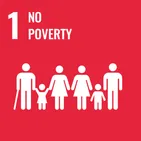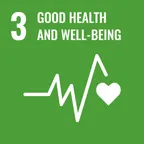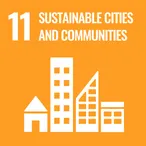Addressing the challenges of healthcare in slums
The slums of low and middle income countries (LMICs) present numerous health challenges for their residents. Improving health service delivery in the slums is crucial in order to reduce death and disease. It’s also important to do this at the smallest possible cost to both the people receiving the healthcare services and wider society.
Reducing ill-health, disease and death
By working collaboratively with multiple stakeholders, the NIHR Global Health Research Unit on Improving Health in Slums is currently running a project designed to benefit the population of low and middle income countries by reducing ill-health, disease and death.
Professor João Porto de Albuquerque is delivering Work Package 1 of the NIHR project, entitled Geo-spatial Mapping of Health Services in Slums. The project, which runs from June 2017 to March 2021, involves the use of digital technologies to generate accurate geographic data about slums and the healthcare services within them.
“The first stage of the project was to identify and map current health services and facilities and understand how these are used by people living in slums across Nigeria and Pakistan” explains Professor João Porto de Albuquerque. "High-resolution satellite imagery means that remote sensing methods for slum mapping has become increasingly widespread."
However, satellites alone cannot produce contextual knowledge or reveal the variety of slums across the world.

Bariga slum in southwestern Nigeria
To better capture such contextual factors, humanitarian organisations and charities are now using collaborative methods for slum mapping by working with local residents to gain a deeper understanding of the slum areas.

A research assistant in a Nigerian slum
Recording and mapping slums and healthcare provision
The researchers are producing accurate maps of slums through the combination of digital satellite imagery and participatory mapping.
The project is working to delivery accurate geographical data about each of the slum sites, which is then stored in the OpenStreetMap database.
The open access nature of the database means it is freely accessible to other organisations.
The research team is also mapping current healthcare services used by slum residents. This includes research into how accessible these services are. Printed maps of slums are created and used in workshops with local residents, planners and policy makers.
Satellite imagery and contextual knowledge
“The combination of data from satellite imagery and contextual knowledge can produce accurate data - creating a more authentic reflection of informal settlements. This will help enable detailed analysis of current healthcare provision for slum residents” explains Professor Porto de Albuquerque.
The project is part of the NIHR Global Health Unit. The Unit is delivering research into health services in slums in countries such as Pakistan, as well as in Africa. The research team is determining the costs of health services, as well as improving knowledge of disease. Researchers are working with decision makers and communities to develop new options for health service delivery in slums, whilst ensuring they are viable and cost effective.

Azam Basti slum in Pakistan
Looking to the future, the team will develop new models of health services to improve health service delivery. The project supports the United Nations Sustainable Development Goals of Sustainable Cities and Communities, No Poverty and Good Health and Well-Being.
Work Package 1 Lead: Professor Joao Porto de Albuquerque
Countries: Nigeria and Pakistan
UN Goals addressed:



